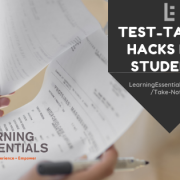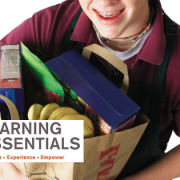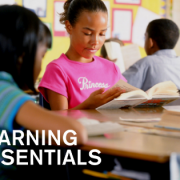Vision Statements for Families of Students with IEPs
When skimming through a teacher’s Special Education binder, the collection of IEPs and 504 plans, as informative as they are, have the tendency to reduce a student to a list of symptoms, behaviors, accommodations, and strategies. Furthermore, a student’s entire learning profile and educational plan is often reduced to a snapshot—a one-sheeter used for quick reference in the classroom.
Children benefit when supports and strategies are consistent and measurable, and IEPs are certainly informative and essential for keeping educators, families, specialists and pediatricians all on the same page. However, the downside of the IEP or 504 is that it draws attention to the negatives, weaknesses and areas of need. To adequately introduce your child to his or her educators, perhaps it’s time to get creative by supplementing the formal documentation with a more personalized vision statement!
What is a vision statement?
In the simplest of terms, a vision statement is a declaration of one’s main goal or objective. Ideally, a personal vision statement would provide the framework for one’s intentions by aligning set goals with plans for achieving those goals. Therefore, a child’s vision statement should account for where the child would like to see himself down the road—what does his ideal future path look like?
Because the IEP offers mainly technical information—how to best support the child, what his/her needs are, how his/her diagnosis manifests, etc.—the vision statement allows parents the opportunity to share personal information about the child’s hopes for the future. This information provides valuable insight and allows the IEP team to see that student as more than a diagnosis or label.
What should you include in your child’s “About Me” vision statement?
To construct your child’s vision statement, parents will want to prepare to clearly articulate their child’s aspirations by first talking to their child about his or her hopes for the future. Questions to ask might be:
- What is something that you consider to be a personal talent?
- What are 3 of the most important aspects of your life?
- How would you characterize or describe yourself in 3 words?
- What is something that you cannot live without?
- What motivates you?
- What do you hope to accomplish in your life?
In discussing these questions, parents can help synthesize the responses and streamline their child’s overall ambitions into a clear vision statement for the IEP team. This vision statement will then act as a guide for educators as they encounter and assist that student throughout the course of his or her learning.
Some examples of a student’s vision statement might be:
“To let my natural curiosity guide me and increase my motivation for learning…”
“To use my social strengths to relate to and learn about different cultures, people, and places…”
“To use my tenacity and optimism to persevere through difficult challenges…”
“To allow creativity to enhance my ability to problem-solve…”
“To be proud of my efforts by always trying my absolute hardest and giving my all…”
How is the vision statement beneficial?
The student vision statement is instrumental in several different ways. First, because the statement expresses personal hopes and goals, it allows educators and the rest of the IEP team to see further inside the student as a whole person, not just as a diagnosis with specific needs. The vision statement also provides insight into how the student sees himself or herself; educators get a sense of the student’s self-perceived strengths and interests. These details help the IEP team reach the student on a more personalized, individual level—they are not just looking at accommodations, but also at additional motivators to help students “buy in” to the academic challenges ahead. Finally, for parents, it is important that their child will be seen as a uniquely capable and successful student, one with all of the same potential and complexities as any other child. The vision statement places emphasis on the child as a person first, not on the diagnosis or struggles.













